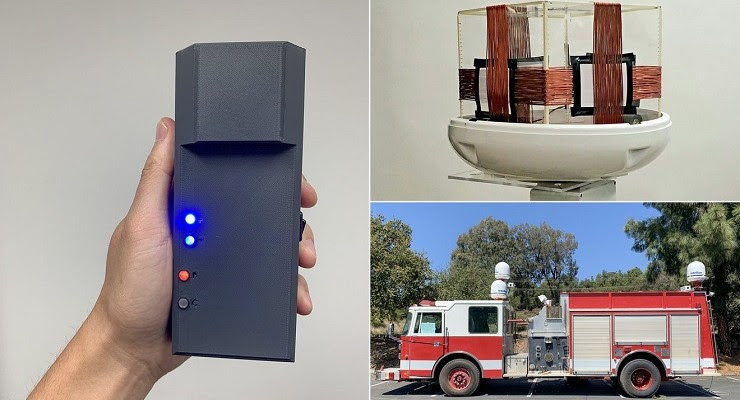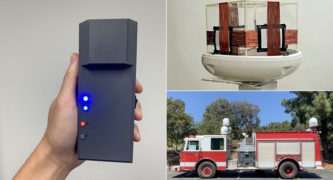
The Jet Propulsion Laboratory has partnered with federal officials to develop a new system to help firefighters quickly and accurately locate comrades who have become lost in the smoke amid a chaotic fire scene, according to JPL.
The Precision Outdoor and Indoor Navigation and Tracking for Emergency Responders system, or POINTER, was created by JPL, alongside the U.S. Department of Homeland Security Science and Technology Directorate, representatives for both organizations said.
POINTER is a “groundbreaking first responder tracking technology that uses magnetoquasistatic fields to three-dimensionally locate responders during emergencies — especially when visibility is low due to heavy smoke or debris,” DHS S&T said in a written statement. “With POINTER, incident command can pinpoint team members to within centimeters.”
The system can not only track a firefighter’s exact position, but also determine whether they are in motion, standing up or lying down, according to DHS S&T.
The project began in 2014 and is now reaching a maturity level at which it can be adopted by fire agencies, JPL said in a written statement.
It can provide better, more accurate and reliable results than traditional technologies, such as GPS, which rely on radio waves, the inventors said.
“Though radio waves offer a reliable means to determine your location in a relatively open space, they can become unpredictable if you go indoors or find yourself surrounded by high buildings, according to the JPL statement. “This may be a minor annoyance when trying to find the location of an appointment, but it could be a life-or-death situation when trying to locate firefighters in a burning building.”
“These fields are not blocked or reflected by the materials found in most buildings, as most construction materials allow quasistatic magnetic fields to easily permeate,” said Arumugam, who is also the principal investigator for POINTER.
POINTER, rather, relies on magnetic fields, or specifically, “magnetoquasistatic fields,” to work, JPL Senior Research Technologist and POINTER Principal Researcher Darmindra Arumugam explained.
“These fields are not blocked or reflected by the materials found in most buildings, as most construction materials allow quasistatic magnetic fields to easily permeate,” he said.
The technology will hopefully be in the hands of firefighters soon, helping to save lives, DHS S&T First Responder Research and Development Programs head Greg Price said.
“Even with all of the advances made in firefighting technology, we still lose far too many firefighters each year,” he said. “We want them to know that we have their backs, that we are working to give them the tools they need to ensure their own safety. POINTER is one of those life-saving solutions.”
Further testing is planned through 2021, before a commercial version of the system is expected to become available in 2022, according to JPL.
The technology may also have uses as part of sensor systems for future JPL spacecraft, representatives said.
More information on POINTER can be found online at dhs.gov/science-and-














 1 comment
1 comment


